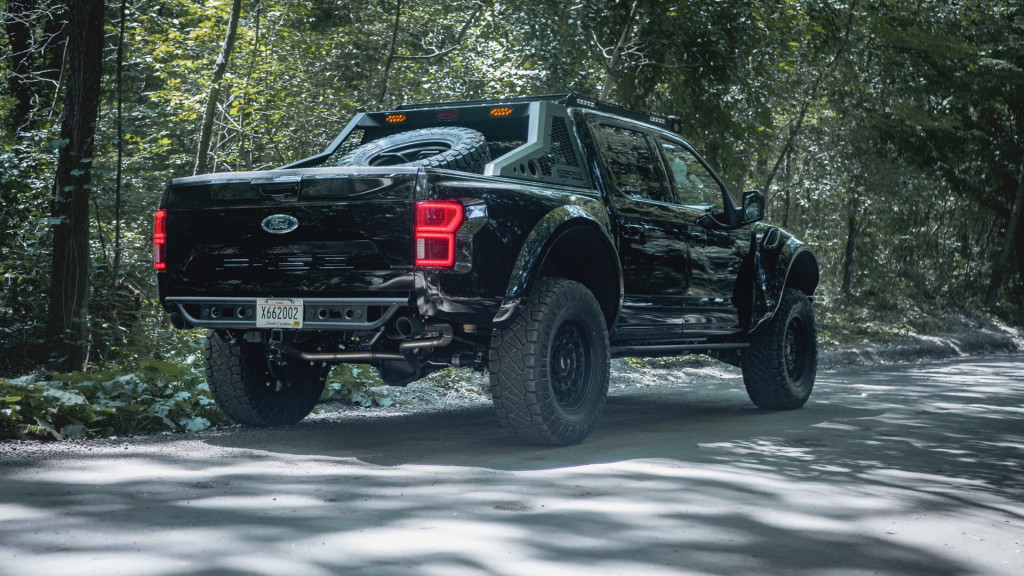The UK modding scene isn’t all about financed new cars on big-budget air – there’s still a massive subculture of enthusiasts getting their fingers dirty on down-to-earth garage builds. This modified Honda Civic EF shows us how it’s done…
There’s a robust core of cars that have unexpectedly leapt right from ‘whatever’ to ‘woah!’ on the petrolhead intrigue spectrum. Cars that were everywhere back in the 1980s and ’90s, but weren’t considered sufficiently interesting or noteworthy to save and thus gradually marched their way into the nation’s crushers, only now to be lamented by a growing clique of retro car enthusiasts who’ve suddenly cottoned on to the fact that there aren’t many left. We’re talking about the E80 Corolla, the B12 Sunny, the second-gen Tercel wagon. Why didn’t we save them?


Ah, don’t blame yourselves. None of us could have known about this massive shift in perception. Look at the Civic EF. Ten or fifteen years ago, this would have been an unremarkable thing to bumble around in, and yet today it’s a very cool steer indeed. Funny how that happens, isn’t it? Time alters perspectives, we can see the merit in the EF Civic now. In fact, the more we pore over the specs, the more we can see just how stellar these little hatchbacks and saloons were. Take the ones with the D14A1 engine, for example – this was an engine option only available in European markets, and it’d be easy to write it off as a boring little 1.4 SOHC that the Japanese and Americans didn’t want. But look at it in context: a Mk2 Vauxhall Astra of the same age gave you around 70bhp from its 1.4-litre engine; the Mk4 Ford Escort’s 1.4 offered 75bhp. The Civic’s 1.4 had dual carbs and a meatier 90bhp – with a 16-valve head, not like those Euro 8-valvers. And it wasn’t just about the superior engine; the EF had a brilliant chassis, with double-wishbone suspension at the front and an independent multi-link rear. There was a time when these cars were seen as grannies’ runabouts in the UK, but that time is most definitely behind us. The increasingly obscure Civic EF is a peppy little tearaway with oodles of potential to become a manic racer.


It certainly turned Irene Lewis’s head. This is her first modified car project, and she’s definitely charged in with both barrels blazing. “I loved Hondas anyway, but then I really fell in love with this shape of Civic,” she explains. “I found the car for sale on Facebook back in May 2014 – the previous owner was also a Honda lover! The car was lowered on springs, red BBS wheels, it had the rear seats stripped from the back, but that was pretty much it.”


An excellent blank canvas for Irene to learn and hone her skills then, and she wasn’t planning on taking any half-measures; indeed, she’d lined up her dream aesthetic and it was something pretty damn hardcore. “I saw photos online of the Kanjozoku style and started researching the history behind it,” she says. “I was really into both the car shape and the story of the way they were used in Japan, and I just knew I really wanted one.” For the uninitiated, the Kanjo Loop is sort of the opposite of the high-speed Wangan Expressway; it’s a tight, narrow Osaka highway with lots of corners – Kanjo racers need agility as much as they need power. The roots of the Kanjozoku (that is, the outlaw racers who tear up the Kanjo Loop after dark, deliberately provoking and then outrunning the police) stretch back to the 1980s. Honda Civics have always been a favourite among this tribe, for the cars’ tuneable motors and taut little chassis. The 3rd-gen Civic Si was the 1980s weapon of choice – Japanese enthusiasts know this as ‘The Wonder Civic’ – and today the EF, EG and EK Civics are strongly continuing the ethos.


Kanjo racers take a lot of cues from Touring Car racing, modding their cars with graphics and aero aids from Group A race cars, as well as borrowing heavily from their chassis setups. The path Irene’s followed is a glorious UK tribute to these late-night Osaka shenanigans, and the most impressive part of all is that this car is a proper home-built hero. The EF’s in the midst of a makeover right now, and as the photos on Irene’s Instagram (@hondachick94) attest, her life for much of the early part of 2019 has involved endless sanding and prep work for the EF’s impending colour makeover. The look you see here, then, is a snapshot in time – Irene’s first interpretation of UK Kanjo before levelling up.


“Like I say, the car was pretty standard when I got it,” she explains. “My first main purchase was the Watanabe wheels, which completely changed the look of the car. I started collecting Kanjo-style stickers from the beginning, and got the door boards added. Then I had the Chargespeed rep spoiler made through Fiberworx, and also fitted the carbon bonnet and exhaust.” This exhaust does much to alter the character of the D14, comprising a JP Performance 4-2-1 manifold going into a Powerflow 2.25-inch exhaust with decat centre and 3-inch rolled tip. Combined with the fact that she’s removed the airbox to let the carbs breathe, this rorty little Honda now makes all sorts of naughty noises. “The next job was to swap the springs for H&R coilovers, before fitting the bucket seats and harnesses.” So the money’s being spent where it matters – H&R is a serious quality name when it comes to coilovers, and the chassis has also received a smattering of Integra Type R upgrades as well as a thorough polybushing. This is a Kanjo-fabulous chassis, built on a budget but with decent money spent where it matters, and it’s more than ready for some decent power. And don’t worry, that’s high up on the to-do list this year…


“I used to use the Civic EF as a daily, although while it’s off the road getting ready for the next step I have a sedan version which I use to get around,” says Irene. “But it’s such a head-turner, it gets so much attention wherever I go which still surprises me to this day! I often get questions about the style of the car, the reasons for the Jason masks, the number boards, window net and so on, so it’s always fun explaining all about the Kanjo, the loop, and I definitely get some blank faces wondering what I’m talking about it! Obviously being a female interested in cars I believe it sparks even more of a reaction as people don’t expect me to be the owner, I think there’s still a stereotype that even if a woman is interested in cars then it’ll be a certain car with ‘girly’ mods. The generic ‘Are you driving your boyfriend’s car?’ comment has certainly been asked a lot over the years.” It’s a real shame that women in the scene still have to endure this sort of outdated nonsense, but hopefully the countless home-spannering ladies we encounter will ultimately help to redress the balance. After all, there’s no such thing as a girl’s car or a boy’s car, they’re all just cars. Judge the machines and their builders and drivers on merit, we say – that’s all that matters, those 1970s clichés don’t belong in 2019.


Irene’s got big plans for her modified Honda Civic EF this year too, you can be sure of that. The bodywork has been a real labour of love, representing untold hours in the garage, but there’s more to this Kanjo Civic than just looks: “Aside from the full respray there’s going to be an engine swap, new wheels, suspension and a few other goodies! It’ll be back on the road before you know it, I’m making great progress, and I have a few shows booked already – Japfest, JapShow and a few at my local circuit, Castle Combe. And then the track days!”


What we’re witnessing here is a remarkable transformation – a car that was previously viewed as a pensioners’ runabout, reinvented as a shadow-dwelling hoodlum with a dark soul and a taste for vengeance. And what it does best of all is to remind us of our roots: modding cars doesn’t have to be a big-money endeavour, and it also shouldn’t be a pissing contest. It’s about getting stuck in, making new things happen, then getting out there and enjoying the drive. Irene’s down-to-earth love for her modified Honda Civic EF and other old Hondas can teach us all a thing or two.
Tech Spec: Modified Honda Civic EF
Engine:
D14A1 1.4-litre 16v twin-carb, airbox removed, purple cam cover, 6two1 skin-grater oil cap, Powerflow 2.25-inch exhaust with decat centre and 3-inch rolled tip, JP Performance 4-2-1 manifold, 5-speed manual
Chassis:
7×14-inch ET20 Watanabe wheels with gold centres and polished lips, 185/50 Yokohama A539 tyres, H&R coilovers, custom front EF upper strut, custom rear EG upper strut, Integra Type R RCAs and LCAs (loop fitment), polybushed throughout
Interior:
Stripped rear, carpets and headlining, Broadway wide-view mirror, Bride Low Max driver bucket, Corbeau Clubsport passenger bucket, STR 5-point harnesses, OMP seat rails, OMP steering wheel with custom purple centre, short-shift kit with anodised purple knob, OEM Honda dash mat, custom CRX doorcards, TRS grey mesh window net, Kanjo masks
Exterior:
OEM-style carbon fibre bonnet, Chargespeed (Fibreworx) rear wing, custom Mk3 Golf splitter, custom amber corner markers and indicators, Kanjo Civic number boards, OEM Honda mudflaps, de-wipered and de-badged rear
Feature taken from Banzai magazine. Words: Dan Bevis. Photos: Gav Roberts.


